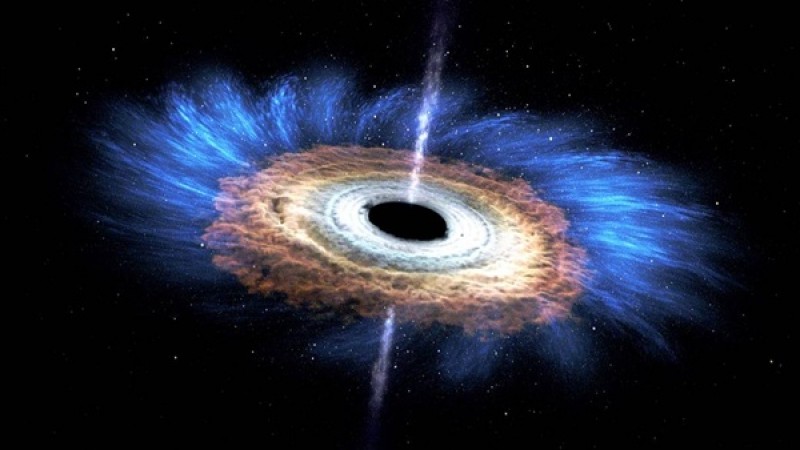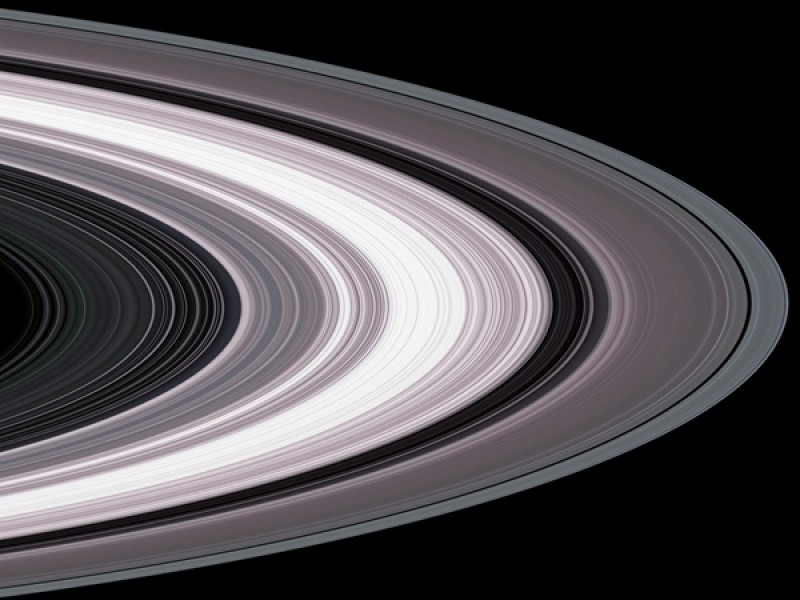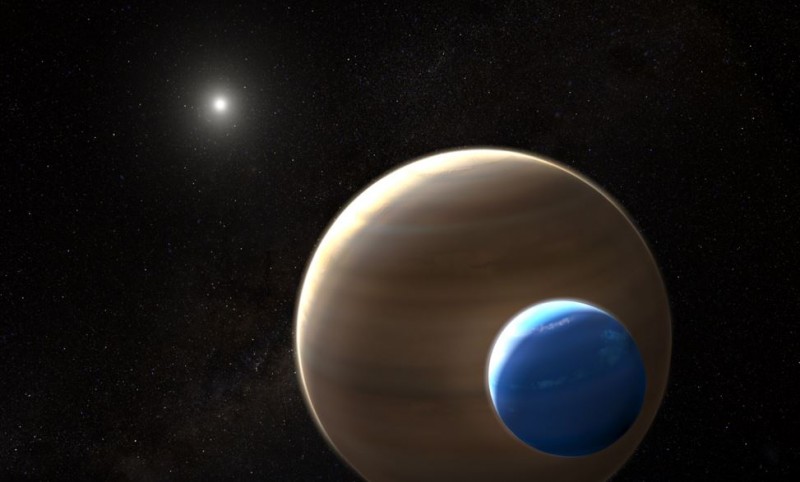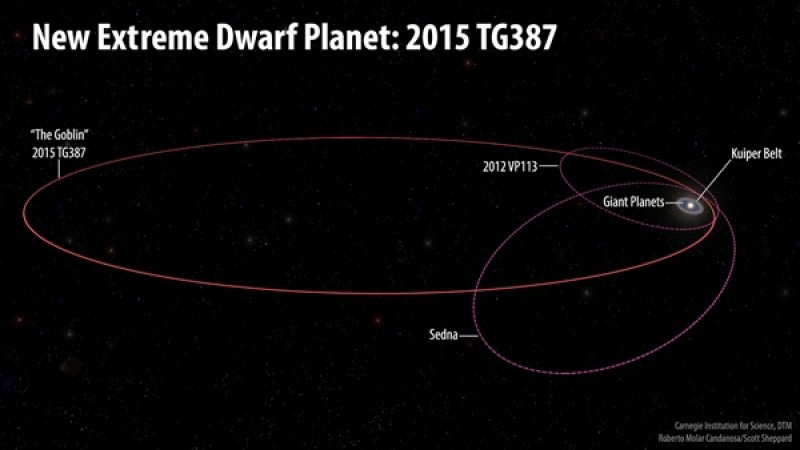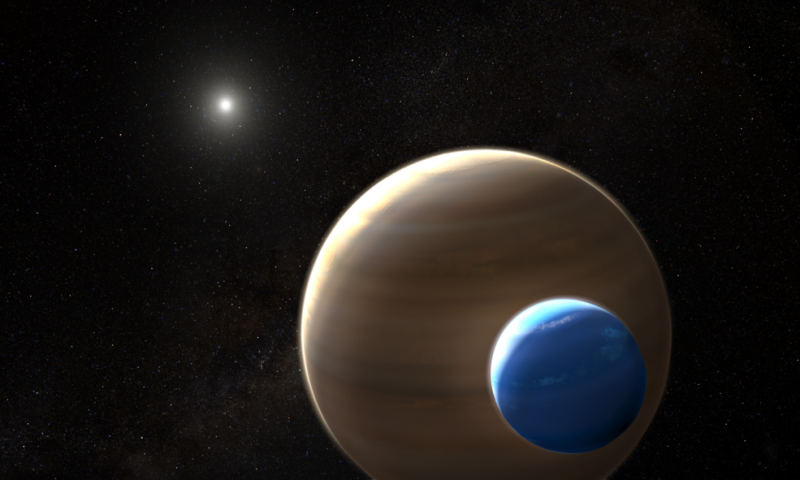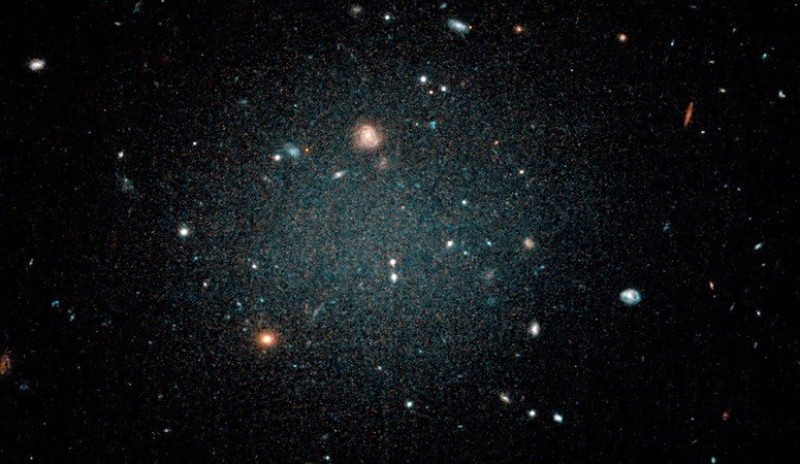Blog
Black holes can't explain dark matter
Friday, October 12th 2018 08:41 PM
The hunt for a dark matter explanation seems endless, but now we can mostly rule out one often mentioned potential culprit: black holes.“The idea of primordial black holes as dark matter is quite old, with some papers already in the ’70s when Stephen Hawking and others proposed it,” said lead study. author Miguel Zumalacárregui of the Berkeley Center for Cosmological Physics. Scientists couldn’t find any proof for the idea in the ’90s, and it started to fade away as an explanation. But the 2015 detection of gravitational waves re-ignited consideration for black holes as an explanation for dark matter.Now, after analyzing 740 of the brightest supernovae, or exploding massive stars, discovered since 2014, scientists have found none that appear to be magnified or brightened by black hole “gravitational lenses.” Gravitational lenses are an effect where black holes magnify bright objects behind them.“Our statistical analy...
Read More
Read More
Richard Branson claims Virgin Galactic will be in space “within weeks”
Friday, October 12th 2018 12:09 AM
According to Sir Richard Branson, founder of the space tourism company Virgin Galactic, their latest spaceplane, SpaceShipTwo, will bne in space in a matter of weeks.“We should be in space within weeks, not months. And then we will be in space with myself in months and not years,” Branson told CNBC on Tuesday in Singapore. “We will be in space with people not too long after that, so we have got a very, very exciting couple of months ahead,” he added. Branson has not yet officially expanded on these comments.Branson’s bold claims signal that Virgin Galactic may once again be a serious contender in the current space race with SpaceX, Boeing and Blue Origin. But is there any truth to Branson’s assertions?
Virgin Galactic moving on from tragedy
Earlier this year, the company completed a test flight with its SpaceShipTwo passenger plane. This was a positive step forward after Virgin Galactic's 2014 fa...
Read More
Read More
NASA Voyager 2 Could Be Nearing Interstellar Space
Monday, October 8th 2018 09:06 PM
NASA's Voyager 2 probe, currently on a journey toward interstellar space, has detected an increase in cosmic rays that originate outside our solar system. Launched in 1977, Voyager 2 is a little less than 11 billion miles (about 17.7 billion kilometers) from Earth, or more than 118 times the distance from Earth to the Sun.
Since 2007 the probe has been traveling through the outermost layer of the heliosphere -- the vast bubble around the Sun and the planets dominated by solar material and magnetic fields. Voyager scientists have been watching for the spacecraft to reach the outer boundary of the heliosphere, known as the heliopause. Once Voyager 2 exits the heliosphere, it will become the second human-made object, after Voyager 1, to enter interstellar space.
Since late August, the Cosmic Ray Subsystem instrument on Voyager 2 has measured about a 5 percent increase in the rate of cosmic rays hitting the spacecraft compared to early August. The probe's...
Read More
Read More
Saturn's ring rain is a downpour, not a drizzle
Monday, October 8th 2018 08:54 PM
Before it plunged into the atmosphere of Saturn on its final death dive, the Cassini spacecraft made 22 orbits of the planet that followed a path no probe had taken before: It flew between the massive planet and its rings. During those final orbits, Cassini’s Ion and Neutral Mass Spectrometer (INMS) spotted water ice and complex organic molecules flowing from the rings to the atmosphere of the planet: ring rain. But it turns out, “ring rain is more like a ring downpour,” according to Hunter Waite of Southwest Research Institute (SwRI), lead author of a paper on the findings published October 4 in Science. The rain itself wasn’t a surprise. “Based on previous work, scientists expected water was raining from the rings into Saturn's atmosphere,” said study co-author Kelly Miller, also of SwRI. She added that the spacecraft was even oriented in a way to intentionally use its radio antenna “as an umbrella to protect it...
Read More
Read More
Astronomers Find First Evidence of Possible Moon Outside Our Solar System
Friday, October 5th 2018 11:59 PM
Using NASA’s Hubble and Kepler space telescopes, astronomers have uncovered tantalizing evidence of what could be the first discovery of a moon orbiting a planet outside our solar system.
This moon candidate, which is 8,000 light-years from Earth in the Cygnus constellation, orbits a gas-giant planet that, in turn, orbits a star called Kepler-1625. Researchers caution that the moon hypothesis is tentative and must be confirmed by follow-up Hubble observations.
“This intriguing finding shows how NASA’s missions work together to uncover incredible mysteries in our cosmos,” said Thomas Zurbuchen, associate administrator of NASA’s Science Mission Directorate at Headquarters, Washington. “If confirmed, this finding could completely shake up our understanding of how moons are formed and what they can be made of.”
Since moons outside our solar system – known as exomoons – cannot be imaged dire...
Read More
Read More
Liquid crystals of RNA could explain how life started on Earth
Thursday, October 4th 2018 10:07 PM
There are a number of theories about how life began on Earth, but one new study published October 3 in ACS Nano suggests that the building blocks of life could have been created with liquid crystals. Liquid crystals have properties of both conventional liquids and solids — they flow like a liquid, but their molecular structure is ordered and symmetric like a solid crystal. You’re likely familiar with them already — liquid crystal display (LCD) screens are used in a multitude of common tech products like computer monitors and television screens. The same state of matter that makes your television screen light up may have played a role in sparking life on Earth. In one new study, scientists found that short RNA molecules can form liquid crystals, which motivate growth into longer chains that are required for life to develop. Today, DNA holds our genetic blueprints and RNA carries out its instructions. But leading scientific theori...
Read More
Read More
Introducing ‘The Goblin’: A new, distant dwarf planet bolsters evidence for Planet X
Thursday, October 4th 2018 09:47 PM
Far beyond the orbits of the solar system’s eight planets, astronomers have found another object they’ve nicknamed “The Goblin.” It’s a small world traveling a lonely path through the outer reaches of our cosmic neighborhood, and it joins a small club of dwarf planets and other planet-like objects out beyond Neptune. Most excitingly, the object’s movements fit into previous theories regarding a possible “Planet X” hiding far away in our solar system, and could help astronomers to find it.
Distant Objects
The dwarf planet’s official name is 2015 TG387, and it was discovered three years ago by a team of researchers using the Subaru telescope atop Mauna Kea in Hawaii. Led by Scott Sheppard of the Carnegie Institution for Science, the astronomers were scanning broad swathes of the sky in search of faint glimmers that might betray new objects in the solar system. Sheppard, who found another similar object just four ye...
Read More
Read More
Astronomers Find First Evidence of Possible Moon Outside Our Solar System
Wednesday, October 3rd 2018 09:54 PM
Using NASA’s Hubble and Kepler space telescopes, astronomers have uncovered tantalizing evidence of what could be the first discovery of a moon orbiting a planet outside our solar system.
This moon candidate, which is 8,000 light-years from Earth in the Cygnus constellation, orbits a gas-giant planet that, in turn, orbits a star called Kepler-1625. Researchers caution that the moon hypothesis is tentative and must be confirmed by follow-up Hubble observations.
“This intriguing finding shows how NASA’s missions work together to uncover incredible mysteries in our cosmos,” said Thomas Zurbuchen, associate administrator of NASA’s Science Mission Directorate at Headquarters, Washington. “If confirmed, this finding could completely shake up our understanding of how moons are formed and what they can be made of.”
Since moons outside our solar system – known as exomoons – cannot be imaged directly,...
Read More
Read More
Does Modified Newtonian Dynamics Negate the Need for Dark Matter?
Saturday, September 29th 2018 05:36 PM
Does Dark Matter really exist? Or is it a figment of our imagination? The ultra-diffuse galaxy NGC1052-DF2, despite its small size, finds itself at the center of a big debate over the correct laws of gravity. This fuzzy-looking galaxy is so diffuse that astronomers call it a “see-through” galaxy because they can clearly see distant galaxies behind it. The ghostly object doesn’t have a noticeable central region or even spiral arms and a disk, typical features of a spiral galaxy. But it doesn’t look like an elliptical galaxy either. Even its globular clusters are oddballs -- They are twice as large as typical stellar groupings seen in other galaxies. All of these oddities pale in comparison to the weirdest aspect of this galaxy -- NGC 1052-DF2 is missing most, if not all, of its Dark Matter. Now a new study based on Modified Newtonian Dynamics (MOND), which relies on data from NGC1052-DF2, provides a very viable explanation for why Dark Matter does not reall...
Read More
Read More
On This Day in Space! Sept. 3, 2006: SMART-1 Spacecraft Crashes Into the Moon
Monday, September 3rd 2018 08:53 PM
SMART-1 launched in 2003 and was the first European spacecraft to go to the moon. It was also the first mission of a program called Small Missions for Advanced Research in Technology, which was a series of low-cost spacecraft that the European Space Agency launched to test new spaceflight technologies. SMART-1's primary objective was to test something called Solar Electric Primary Propulsion, or a solar-powered electric engine.
While it orbited the moon for almost two years, it looked for water ice and other chemicals on the lunar surface. When it slammed into the moon, that was also done for science. Astronomers back on Earth watched the impact with their telescopes, hoping that it would give them some insight into the mechanics of meteor impacts.
Source: space.com
Read More
Read More
